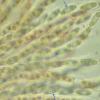
15-12-2025 21:11
 Hardware Tony
Hardware Tony
Small clavate hairs, negative croziers and IKI bb

15-12-2025 07:09
 Danny Newman
Danny Newman
indet. Rutstroemiaceae sp. on unk. fallen leavesMc

15-12-2025 15:54
 Johan Boonefaes
Johan Boonefaes
Unknown anamorph found on the ground in coastal sa

15-12-2025 15:48
 Danny Newman
Danny Newman
Melanospora cf. lagenaria on old, rotting, fallen

15-12-2025 07:05
 Danny Newman
Danny Newman
Pseudosclerococcum golindoi (det: Zotto)near Cosb

15-12-2025 11:49
 Danny Newman
Danny Newman
ITS sequences from the following two collections B

15-12-2025 12:34
 Danny Newman
Danny Newman
indet. Rhytismataceae on oak leafnear Purchase Roa

09-12-2025 12:06
 Andgelo Mombert
Andgelo Mombert
Bonjour,Je recherche l'article concernant Hypobryo
On dead stem of Urtica, with Leptosphaeria acuta and Nectria leptosphaeriae, there were some small black dots cracking the surface. Perithecia immersed and black.
Spores 12 - 14 x 4 - 4,5 µm, clearly striate (longitudinally), with 2 guttules. Ascus IKI negative.
I did not find anything with striate spores of that size.
Does anybody have an idea ?
Best regards,
Daniel
Cherche la solution vers les Phomatospora (peut-être P. dinemasporium).
Amitiés,
Alain
Les ascomes sont-ils poilus ?
Alain
C'est vrai que ça pourrait coller à la forme parfaite de Phomatospora dinemasporium s'il n'y avait ces spores nettement striées. Ce caractère n'est pas indiqué dans la littérature que je possède... As-tu déjà observé ces stries ?
Daniel

est-ce que ça colore le bois en jaune?
Christian
Non, la tige est un peu jaune verdâtre dans son ensemble mais il n'y a pas de coloration jaune particulière autour des ponctuations, ni à l'intérieur de la tige.
Daniel
Concernant le "Nectria", il n'est pas vraiment poilu, il y a juste quelques poils blancs ou hyalins dans la moitié inférieure qui fixent l'ascome sur la tige.
Il est de très petite taille, 250 µm de large, un peu plus en hauteur, en forme de poire. Couleur uniforme, rouge à rouge orangé.
Malheureusement trop petit pour en faire une photo.
Daniel

in response to "C'est vrai que ça pourrait coller à la forme parfaite de Phomatospora dinemasporium s'il n'y avait ces spores nettement striées. Ce caractère n'est pas indiqué dans la littérature que je possède... As-tu déjà observé ces stries ?
Daniel"
from: Dinemasporium (coelomycetes)
by Junxin Duan, Wenping Wu and X.Z. Liu
in Fungal Diversity, vol. 26, pp. 205-218
"Phomatospora has a structured apex to the asci and striately ornamented ascospores, two features not mentioned by Webster (1955), but considered to be very important."
amitiés
Chris
I finally found - thanks to the article you mentionned - a description and an illustration of striate spores of Phomatospora berkeleyi in Mycotaxon 19, page 320. I did not find anything about Ph. dinemasporium, but as it seems to be an important caracter of the genus, Ph. dinemasporium has surely the same striations.
Alain was right from the beginning !
Daniel

 Mycotaxon-19-0320b-0001.jpg
Mycotaxon-19-0320b-0001.jpg